I recently visited the Shigakougen or Shiga Highlands in Nagano here in Japan, as part of my trip to test the Canon EOS 5Ds R, and one of my main goals was to capture the blue-green summer foliage, so today we’re going to walk through three separate shoots on June 22, 23 and 24, 2015.
On June 22, I’d spent the afternoon with the Snow Monkeys on my first summer visit, and we looked at photos from the monkeys in the last episode. The monkey park closes at 5pm in the summer, which gave me another couple of hours of daylight, so I headed up the mountain to the Shigakougen area, as I was hoping to get some landscape photos of some of the many ponds in the area.
As you arrive in the highland plateau after driving up the mountain, the first pond is called Ichinuma, which literally means the first pond or number one pond. I parked my car in the car park down the road, and walked around to Ichinuma, and as I arrived the air was clear, and I recall thinking that I’d love it if we got a little bit of mist to add atmosphere to the images. I’d made maybe three exposures of the lush greenery on the other side of the pond, and then all of a sudden, a mist rolled in across the surface of the water and some low cloud came over from the back of the trees, as we see in this image (below). I couldn’t believe my luck, with this mist coming in this way, perfectly on cue!
Although the 50 megapixels of the 5Ds R is plenty to give me some great large prints, even if I crop down to this kind of panorama, I had been using the 100-400mm Mark II lens, and picking out just small sections of the trees, as we’ll see in some other images after this. I had just rotated the camera in the lenses tripod ring, to capture some vertical shots to stitch together for a panorama, so I went ahead with the series of frames as the mist rolled in.
The thing that you have to be careful with when shooting in conditions like this is if you aren’t relatively quick getting your images, the mist and cloud can move so far that it makes it difficult for Photoshop to stitch the images together because the content of the adjacent frames can be too different. I was shooting in Live View, as I often do for landscape work, and there’s a bit of a lag after making your exposure before the image comes back, and you can make the next exposure, but as soon as it came back, I panned the camera around by around half a frame, to give Photoshop plenty of overlap, and then quickly shot my next frame.
The final image that we see here (above) is from five vertical images, and is a whopping 140 megapixels. I can print this image at 24 x 43 inches at 432 ppi, without any resizing, which will give absolutely amazing detail in the final print. These images were shot at 0.6 sec, f/10, ISO 100 at 112mm.
As quickly as it rolled in, just five minutes after the last image, the mist was gone, as we can see here (right).
I was feeling really fortunate to have arrived when I did and get that beautiful mist and low cloud, but with it gone, I concentrated again on capturing the lush greens.
The line of bright yellow-green color along the waterline is from ferns, giving way to the green leaves on the azalea bushes around the base of the trees. When you zoom in on this image, you can actually see spots of orange red as the azalea were flowering, another reason that I decided to visit this area at this time.
Although I like the wide aspect of the panorama images we’ll look at today, and also the landscape orientation images, here I went for a vertical orientation to emphasize the vertical tree trunks and their reflection in the water.
Note that I also composed this so that none of the tree trunks are cut off along the side edges of the image. It can be difficult with woods to find a good place to frame your shot, but it really helps with images like this if you can find a good clean edge like this.
Note that I had also zoomed in to 148mm so as not to include any of the sky, now that the low cloud was gone. The sky was just white and lacked texture, so would have just been a distraction. This was shot at 0.8 sec, f/10 at ISO 100.
This next image (below) is another stitched panorama, from six vertical frames this time. Again, this is the shot that I had just set my camera up for when the mist rolled in, so with the missed gone, I shot another series of images and stitched them together in Photoshop. Again, my goal here now was to capture the lush greens, with that flash of brighter green from the ferns punctuating the line between the real and the reflected world.
The resulting image is this time 160 megapixels, and can be printed at 24 x 44 inches at 453 ppi, which again is going to give incredible detail. Of course, I could print much larger, but I’m basing this on my own large format printer’s maximum width of 24 inches. If I had a 44 inch large format printer, I could print this at 44 x 82 inches still at 244 ppi, and that would be amazing too, and this all made possible by the 5Ds R with its 50 megapixel sensor and a bit of stitching. Of course with a lower resolution camera I could have done multi-row stitches, but I never felt it worth going to that much trouble.
I spent a total of 15 minutes at Ichinuma on the 22nd, before heading back down the mountain to a business hotel for the night. The next morning I got up bright and early and went back to the monkey park until lunch time, then after grabbing something to eat at the convenience store, I drove back up to the highlands. I had booked a hotel just across the road from Ichinuma on the 23, as I wanted to get back to the pond at dawn the following day.
For now, I was going to make the most of the afternoon driving around the various spots I know in the area. I drove past them all initially, because the sun was still high, and went up to the highest point at Shibu Pass (Shibutouge), which is just inside the border on Gunma Prefecture, next to Nagano Prefecture, where I made this photograph (below).
This was shot with the new 11-24mm f/4 L lens from Canon, which I reviewed in episode 465. I opened the lens right out to 11mm for this shot, at f/11, ISO 100 for 1/100 sec, and processed it in Silver Efex Pro 2 for this beautiful contrasty black and white. The scene at this time of year is nothing really special, so I was really happy to see this somewhat dramatic sky, that lasted really just a few minutes shortly after I arrived, and then a bank of cloud came over from behind me and it poured with rain for a while, so I was lucky here with my timing again.
Shibutuoge, which is about 20 to 30 minutes past the main pond area, was the furthest I went, and having done a u-turn, I stopped at the location where I shot this next image of Yokote Mountain, again with some nice stormy skies (below). This was again shot with the 11-24mm at 15mm this time, for 1/60 sec at f/14, ISO 100.
At this location I’d actually done a few series of bracket shots, thinking that I might have to do some HDRs because the sky was so bright, and I was still at this point thinking that the 5Ds R probably had slightly less dynamic range compared to my 5D Mark III. As I suspected might be the case though, I got home and found that I simply hated all of the HDR images that I was able to create from my bracketed images. I also found that my usual claim, that I can usually get everything I need from a single frame, even when parts of it seem very dark, continued to be the case with the 5Ds R.
It can be scary when you see the base image in the camera, but I now know that I can trust my instincts again, even with the 5Ds R. Here (below) is the original photo of the previous image, straight out of the camera, so that you can see what I mean. I just expose to the right, so that the brightest part of the scene is on the far right side of the histogram, and there is enough detail in the shadows to bring it all back out with some slider adjustments in Lightroom. You’d think that there was no information in the black foreground here, but as we see from the previous image, that’s not the case.
I was also pleasantly surprised to see that the 5Ds R actually has slightly better dynamic range than the 5D Mark III according to DxO Mark’s tests. They have the 5D Mark III at 11.7 EV and the 5Ds R at 12.4 EV dynamic range, which is surprising, but great to hear.
I continued to drive back down the mountains towards Ichinuma and stopped at another pond on the way, called Kidoike. It was raining, so I decided to go with the flow, and include the droplets of rain in the surface of the pond, as you can see if you look closely in this photo (below).
Again here, I’m watching the edges of the frame, trying to find the best place to cut off the scene, so as not to have dissected tree trunks. I’d have preferred a smooth clear reflection, but I think the soft summer rain adds a different kind of mood to this image, which I don’t dislike too much either. This was a 0.5 sec exposure, at f/14, ISO 100 at 105mm. I headed back to my hotel for the night after this final visit to the Kidoike.
On the morning of June 24, I got up at 4am, for a dawn shoot. The sun was set to rise at 4:32am I think it was, so this would give me just enough time to throw on some clothes, grab my camera and go back across to Ichinuma. Because I’d gotten some shots with mist on the surface of the water two days before this, I actually considered going back to Kidoike first, because it had been raining the previous day, and I wanted that clear reflection. I decided to stick with my original plan though, as I really wanted to capture a different mood at Ichinuma.
I wanted to capture the foliage in the dawn light which I figured would give it the blue-green look that I associate with Japanese summer foliage, and I was lucky enough to get that, back at Ichinuma, as planned (below). As I’ve mentioned in the past, there is a very blurry line between the colors blue and green in Japanese culture. Ao means blue, and midori means green, but the Japanese will often also refer to green, as “ao” which is blue, but they really green. Confusing, I know, but that’s how it is.
This image was shot at 0.3 sec, f/16, ISO 200 at 100mm. I actually really wish I could somehow get a white horse on that shore in this photo. There is a Japanese artist named Kaii Higashiyama (1909-1999), who created a wonderful series of paintings depicting blue-green scenes very much like this photograph, but he painted in a majestic white horse. They are truly beautiful prints. The best example I can find online to show you is on the cover of a children’s book called “The White Horse” here.
I spent maybe 15 minutes at Ichinuma, as I was confident I’d gotten my shots, and I wanted to get back up to Kidoike while the sun was still behind the mountains. Once direct sunlight hit these ponds the mist would be gone, and the blue-green would be gone too. As I drove up towards Kidoike, a valley filled with morning mist came into view, so I had to stop the car and walk back up to where I made this photo (below).
I seem to be really attracted to birch trees. I think they’re perhaps my favorite tree. I just love the contrast that their white trunks provides, as in the other images we’ve been looking at today too. This was actually quite challenging, as the valley has ski lifts and telegraph wires and other structures strewn all over the place. I shot something a little wider than this too, but there was a large pole to the left, and wires running all over the top, and I don’t have the patience on the computer to mess around removing them. This image still captures the mood of the scene though.
I love being out at dawn when all of this is happening. It’s just a shame that Japan doesn’t adjust the clocks in the summer time. The sun rises around 4:30 and sets just after 7pm in summer time. We could put the clocks forward by two hours and actually be able to utilize the light evenings, but the fear is that the salary men would have an even harder time dragging themselves out of the office if it was still light outside.
There is still talk of doing this, but I wish they’d hurry up. It would open up many photographic opportunities in both the mornings and the evenings. The reality is that to get to any of these places from Tokyo, you pretty much have to drive through the night and sleep in the car for a while, or stay in a hotel, which is what I generally end up doing these days.
Let’s look at the last image of this series, from back at Kidoike, shortly before the sun hit the top of the trees (below). This is another stitched panorama, from around six frames. I used the new panorama stitching feature in Lightroom 6 to create this one. It’s actually really good. It is quick and saves the resulting file as a DNG so you still get all of the benefits of a raw file.
The only problem is that you can’t easily fill in areas where there is background showing. In this image there was a slither of white in the top left, that I was not able to crop out, or I would have gotten too close to the top of some of the trees, so I ended up going into Photoshop anyway, to content aware fill that slither of white. Again, I’m longing for a while horse here. Maybe some day I’ll make enough money to put on a production and actually make that happen. 🙂
The exposure for this one is 1/5 sec, f/11, ISO 100 at 100mm. We can tell that the light was coming up as the sun came over the mountains, because the shutter speed was much faster at this point. Shortly after this, the sun hit the lake, the mist disappeared, and the contrast got up so I packed my stuff into the car, and started to drive back to Tokyo.
I hope the very similar theme in most of these images wasn’t too boring for you. I had a definite goal with these images, which affected the composition and time of the images. I’m very happy with the results, and can’t wait to actually start printing some of these. Some of them are already available as fine art prints if there are any collectors among you, and believe me, these are going to look stunning! They may well be some of the first 5Ds R fine art prints to hit the market too, which is pretty cool.
Show Notes
Subscribe in iTunes for Enhanced Podcasts delivered automatically to your computer.
Download this Podcast in MP3 format (Audio Only).
Download this Podcast in Enhanced Podcast M4A format. This requires Apple iTunes or Quicktime to view/listen.

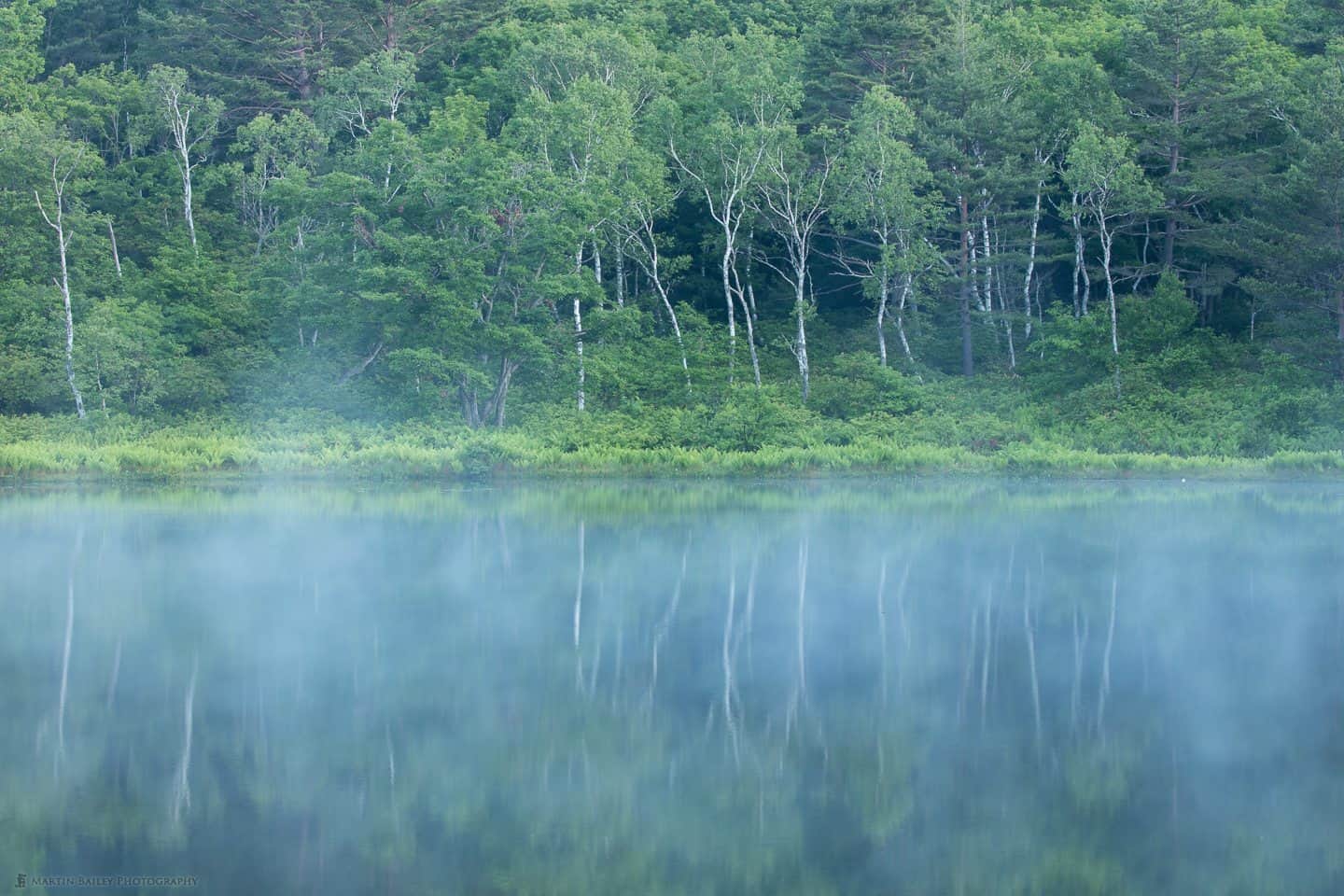


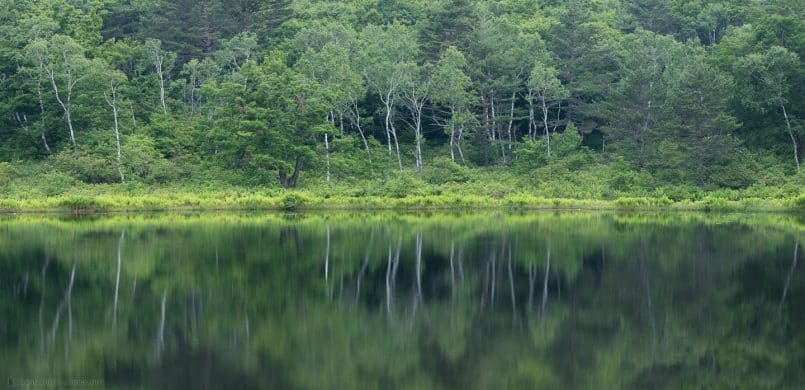
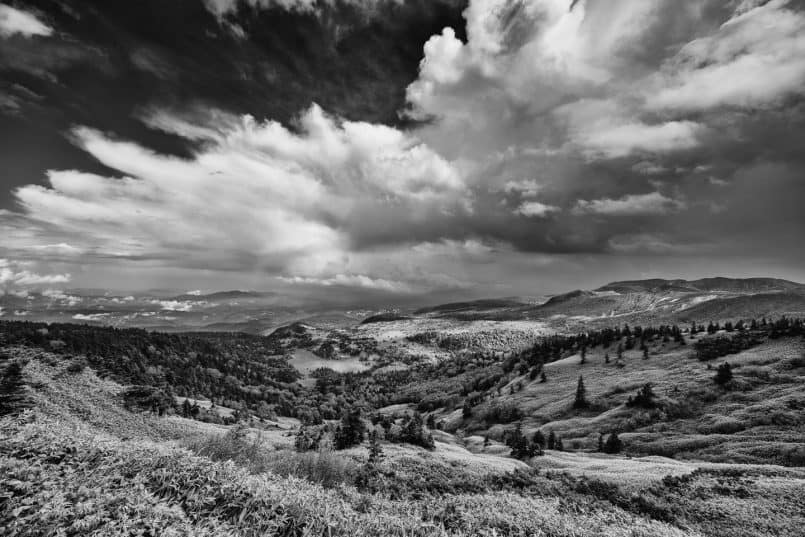
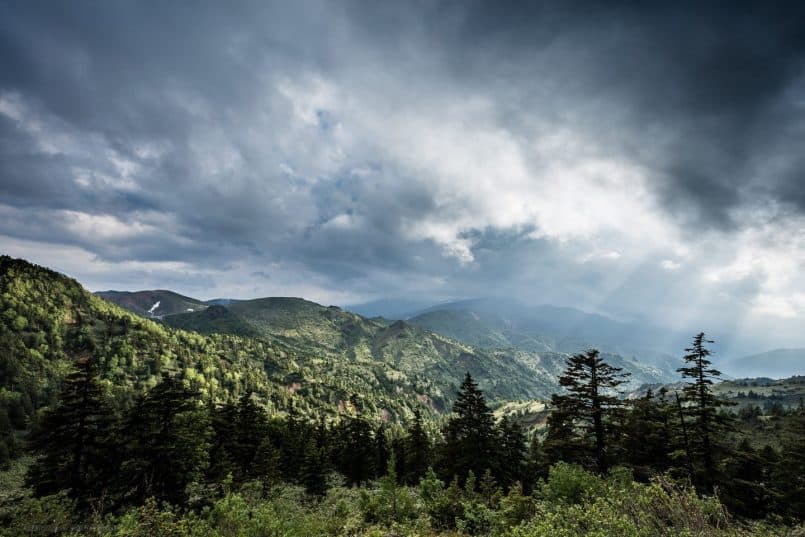


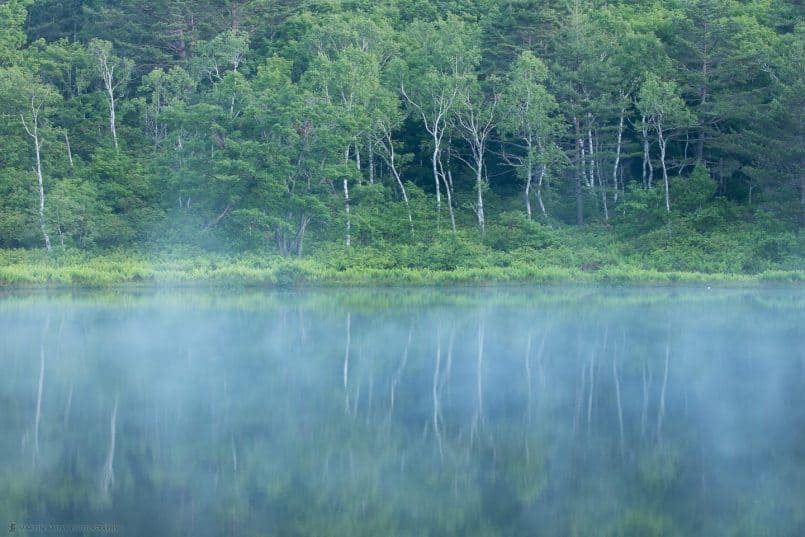
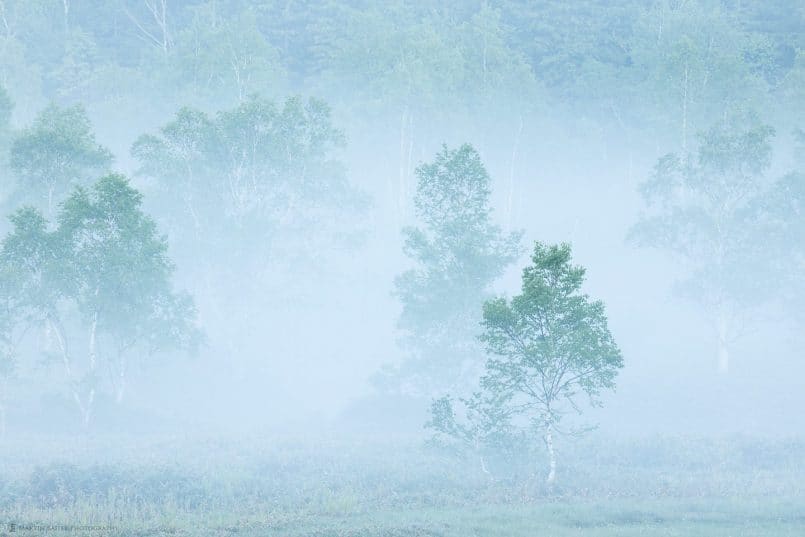
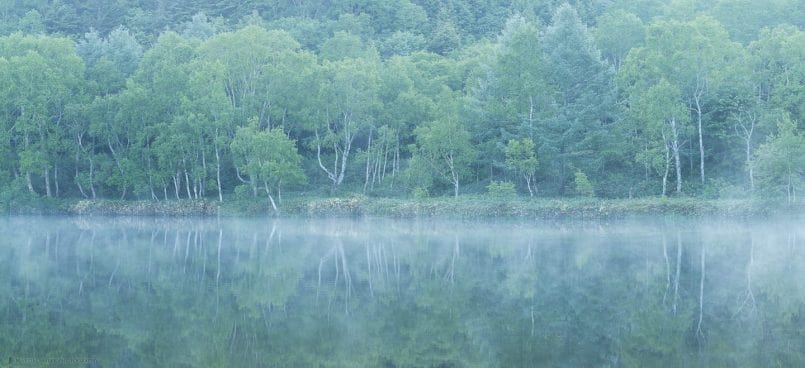

0 Comments